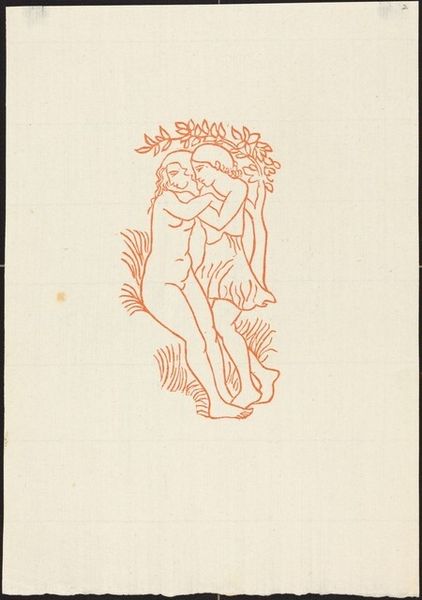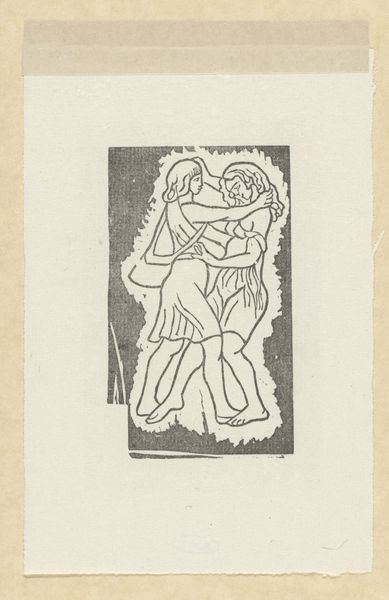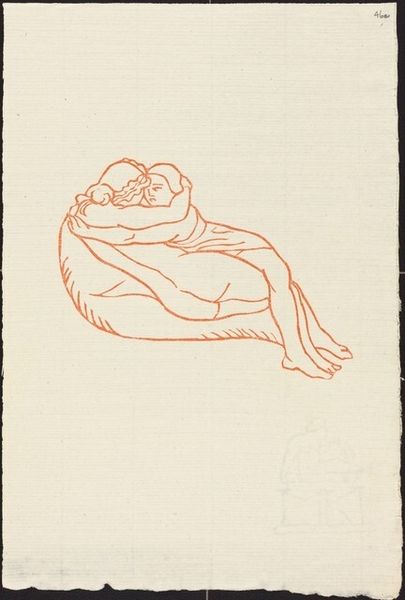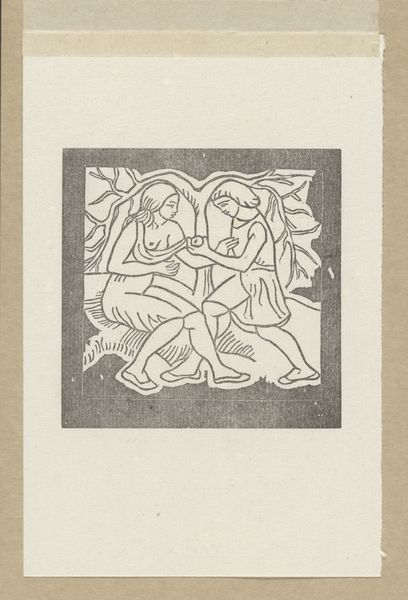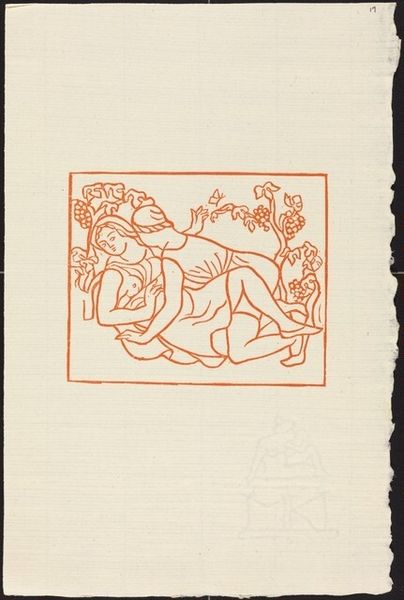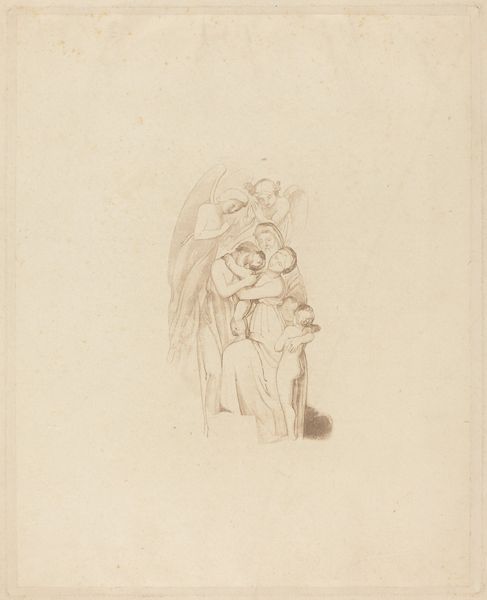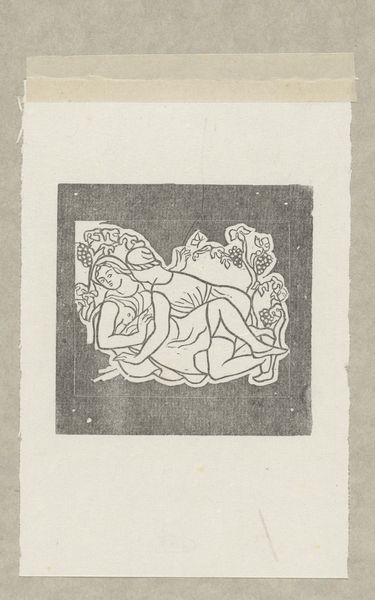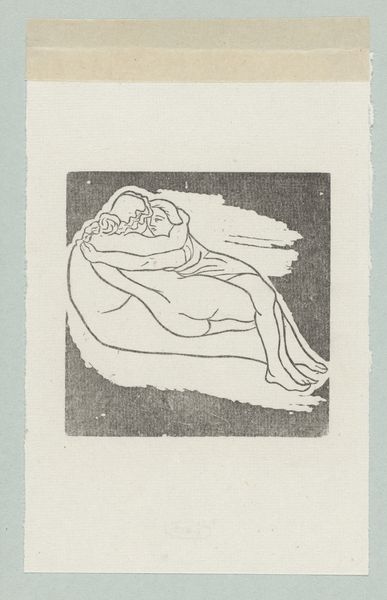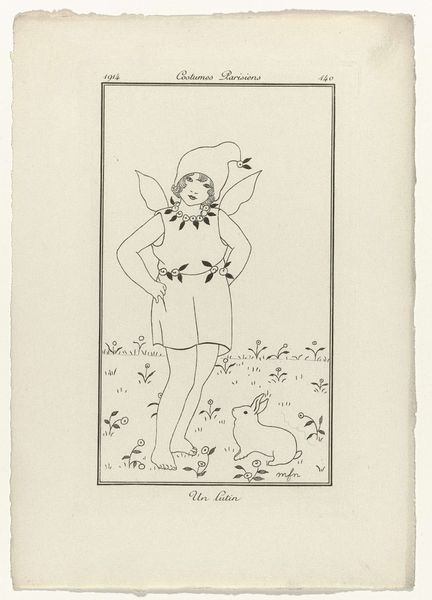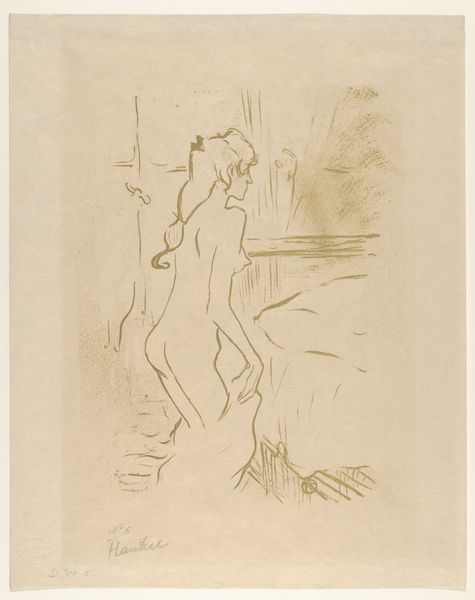
drawing, paper, pen
#
portrait
#
drawing
#
comic strip sketch
#
aged paper
#
toned paper
#
light pencil work
#
old engraving style
#
sketch book
#
figuration
#
paper
#
personal sketchbook
#
line
#
sketchbook drawing
#
pen
#
storyboard and sketchbook work
#
nude
#
sketchbook art
Dimensions: height 198 mm, width 131 mm
Copyright: Rijks Museum: Open Domain
Curator: Let's turn our attention to "Daphnis en Chloë verstrengeld" by Aristide Maillol, a drawing rendered in pen on paper, dating to 1937, currently residing at the Rijksmuseum. Editor: My first impression is one of serene sensuality. The figures, intertwined beneath a stylized tree, evoke a timeless romance. There's a vulnerability to the lines, a gentle grace. Curator: Absolutely. Note the economy of line – the artist's deliberate reduction of detail serves to emphasize form and the emotional tenor of their embrace. Editor: But that embrace, while tender, occurs within a distinctly pastoral, arguably classical, setting. Doesn't this choice inevitably invite interpretations about idealized sexuality and its elision within historical power structures? We are shown these idyllic bodies but within what framework of acceptable representation? Curator: Undoubtedly, context is vital, and this piece draws deeply from classical forms and mythology, but one can still read and admire how Maillol skillfully uses line and contour to define the volumes of the bodies, how each curve responds to another in that limited visual vocabulary. The intertwining suggests unity through shared space. Editor: True, and the lack of facial detail focuses us instead on gesture and posture. Yet, this choice also subtly denies them individual agency. They exist more as embodiments of "love" than fully realized characters. Considering the date, 1937, is it not important to remember that Europe teetered on the brink of a catastrophic war, thus causing a longing for the pastoral, for an innocent sensuality that masked impending darkness? Curator: An interesting argument and likely at play during the conception of this sketch. Nonetheless, consider that this drawing's beauty arises from its formal coherence, the elegance of its execution regardless of any political motivations present during its creation. It is precisely these qualities that secure its lasting significance. Editor: I find value in that reading, while I am unwilling to disconnect that aesthetic experience from historical circumstance. It prompts us to keep challenging the historical context of beauty as Maillol renders it in our current cultural landscape. Curator: A fitting and vital conclusion! Thank you for your thoughts on the artwork's importance and effect on art history.
Comments
No comments
Be the first to comment and join the conversation on the ultimate creative platform.
